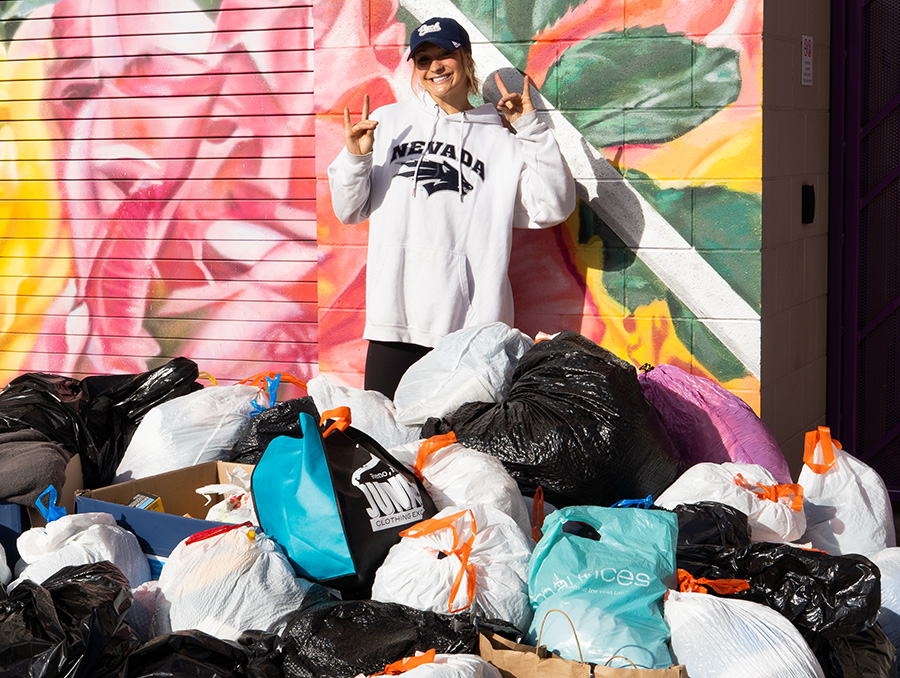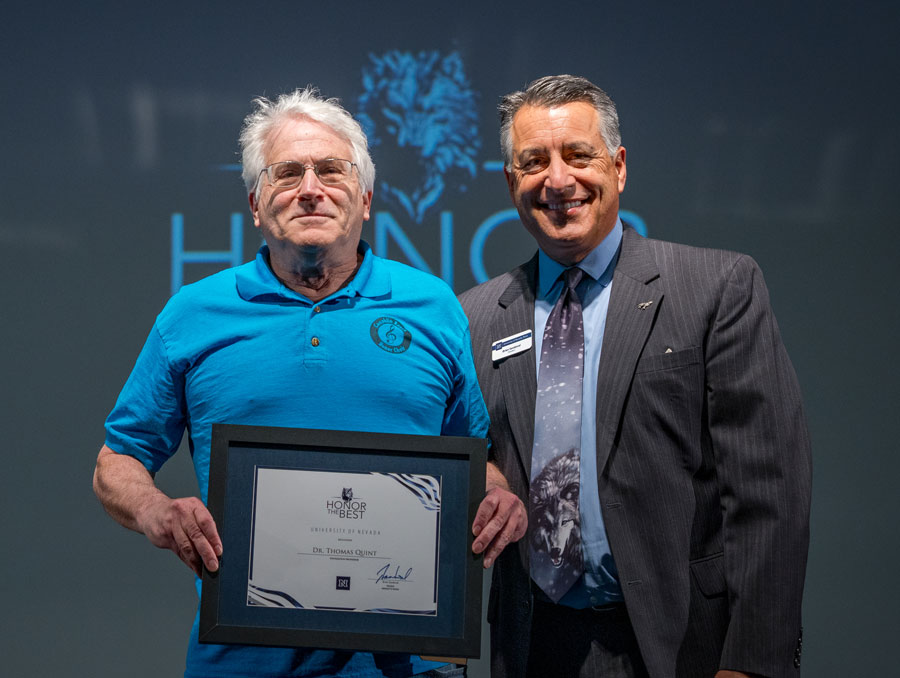Despite a stumbling block during the construction phase, the University’s Concrete Canoe team is set to compete in the American Society of Civil Engineers’ concrete canoe race from 9:30 a.m. to 2 p.m. April 15 at the Sparks Marina. The regional competition is the culmination of the ASCE’s Intermountain Southwest Student Symposium (ISWS), April 13-15 at the University and the Sparks Marina.
After winning last year’s ISWS regional competition in Las Vegas, and then placing seventh in the national competition in June 2022, the team is more than ready for this year’s challenge.
“(We’re) excited for this year’s competition; we have been working really hard on making sure we are prepared,” project managers Lucas Pritchett and Tanner Mcilree wrote in an email. “The fact that we are hosting the competition this year has only encouraged us to go above and beyond. We’re confident in this year’s team.”
Due to an inability to get foam — a material typically used in the concrete canoe construction process — this year, the team had to alter how it built the canoe. The canoe mold this year was made entirely out of wood, using vinyl flooring to create the shell. Concrete then was placed around the outside of the mold. Inspired by the Reno Rodeo — another regional competition in the Truckee Meadows —the team named its canoe Taurus.
ISWS includes multiple competitions
The concrete canoe race is just one aspect of the ISWS, which also includes the Steel Bridge Competition and the Timber Strong Competition, in which students design and build two-story wood light-framed buildings. The event is open to the public; a schedule is available on the ASCE ISWS website.
Hosting the ISWS, which brings together students from 12 universities across four states, is seen as a significant accomplishment after the University’s ASCE chapter struggled during the COVID pandemic.

“Zach Flowers and Karlie Del Santo have put in so much time to make this conference a success and I am so proud of all their hard work,” University lecturer Kelly Keselica, the team’s faculty advisor, said. “We are thrilled to host this conference! Our student chapter struggled immensely during COVID and most of our members graduated. This competition has transformed the club, reigniting excitement for these engineering competitions.”
The Timber Strong Competition runs from 9:30 a.m. to 12:30 p.m. April 13 in the Lawlor Events Center and the Steel Bridge Competition is from 9 a.m. to 5 p.m. April 14, also in the Lawlor Events Center. Concrete canoes built by all competing teams will be on display from 9:30 a.m. to 1:30 p.m. April 13 at the Gateway Plaza in front of the Joe Crowley Student Union before the April 15 competition at the Sparks Marina.
To move their 200-pound canoe, the University’s Concrete Canoe team will use a sponsored trailer to move the canoe to the Sparks Marina from the University’s Agricultural Education Building on race day. A special canoe dolly made of steel will move the boat into the water with help from most of the canoe team members.
“The faculty and staff in the Department of Civil and Environmental Engineering are extremely proud of the many accomplishments our students have achieved, particularly their leadership in hosting the Intermountain Southwest ASCE Student Symposium this April,” Civil & Environmental Engineering Associate Professor Eric Marchand said. “Our talented students have been preparing to compete in many of the student competitions and we are looking forward to an exciting, fun-filled few days as students from nearby institutions converge in Reno. It is truly remarkable to witness the ingenuity, creativity and dedication that is displayed by the various American Society of Civil Engineers (ASCE) student chapters and I am sure this event will be a great success.”
Heavy lift
The University’s Concrete Canoe club is a civil engineering-based club open to all fields of engineering. The group spends most of the academic year planning, designing and working together to create a working canoe out of concrete.
The design process starts at the beginning of the academic year, and continues throughout. The team has multiple branches that specialize in different aspects of the canoe: the hull design team, the structural analysis team, the mix team and the construction team. Each of these groups coordinate and work together to make the canoe, and in turn, members have fun and learn about concrete.
The team removes certain heavier materials from the concrete mixture and replaces those with lighter materials in addition to using admixtures to change the density. The team also calculates the volume displacement, so the heavy canoes still function as canoes. The biggest day of the whole process is “pour day,” when team members gather at 4 a.m. to cast the canoe with concrete. That makes for a long day, but by the end, the team will have the canoe — and hopefully a winning one.















